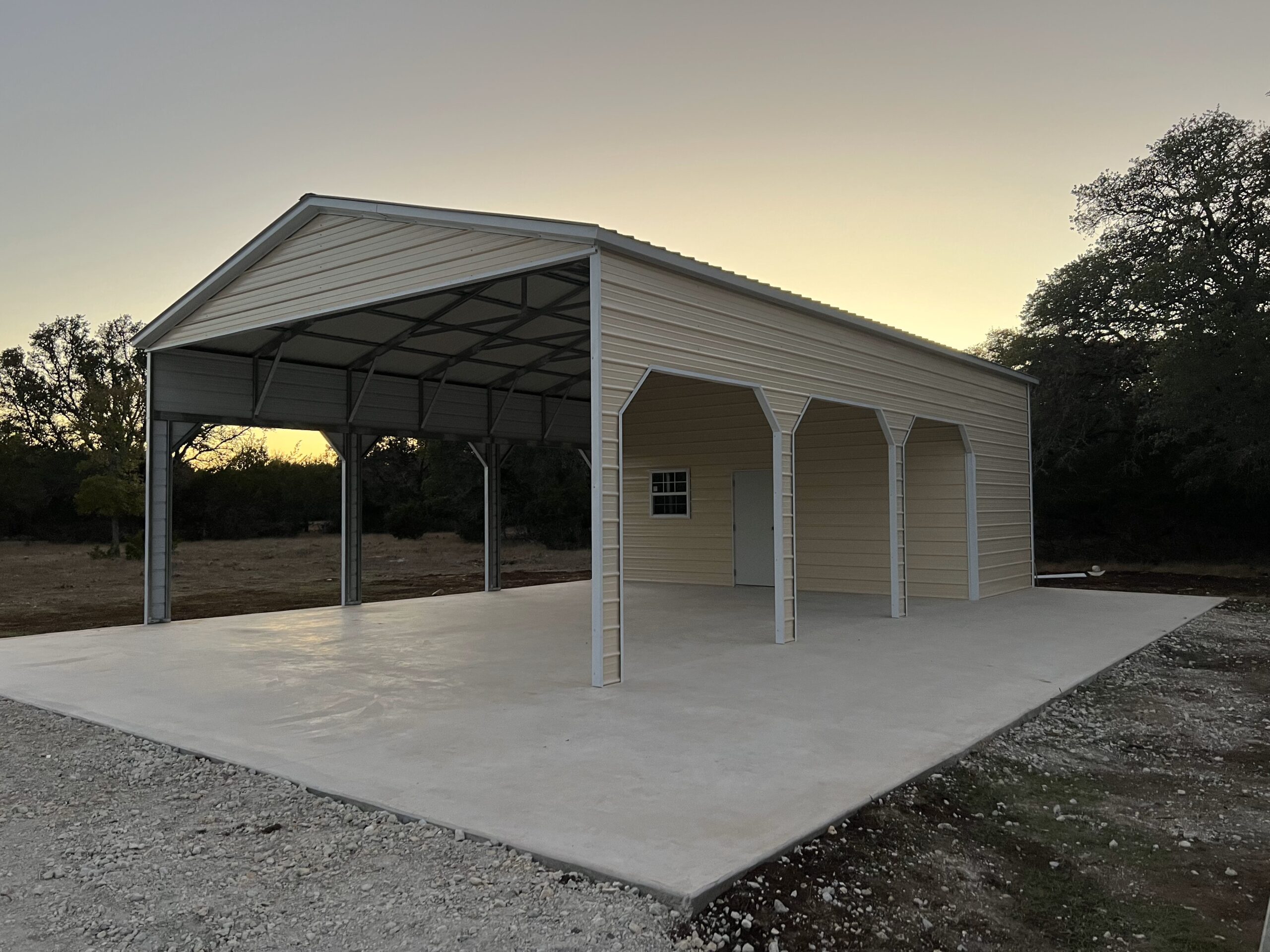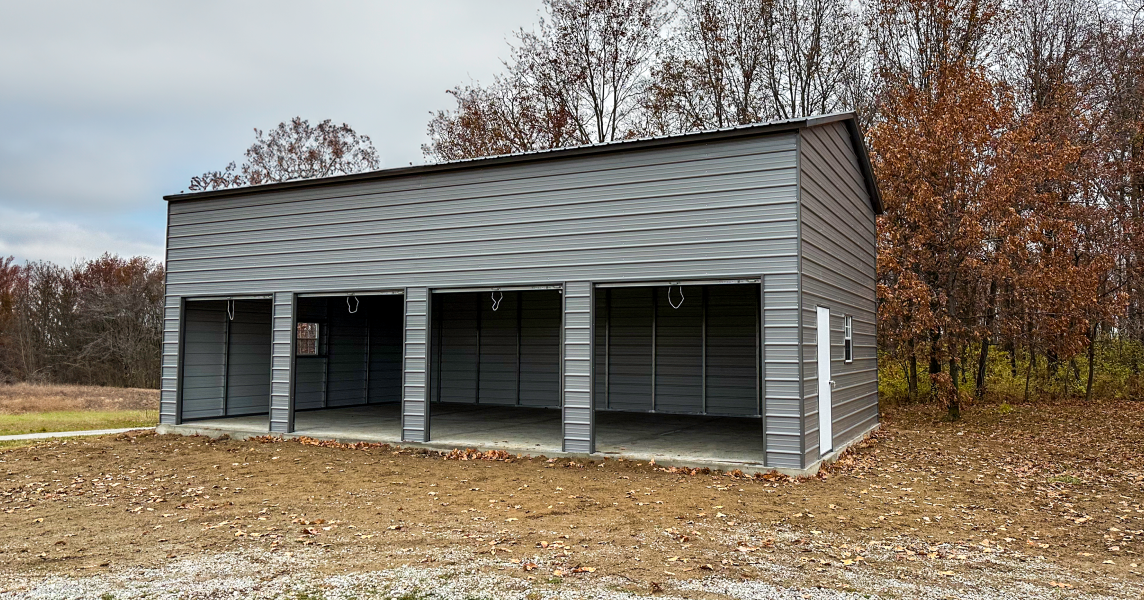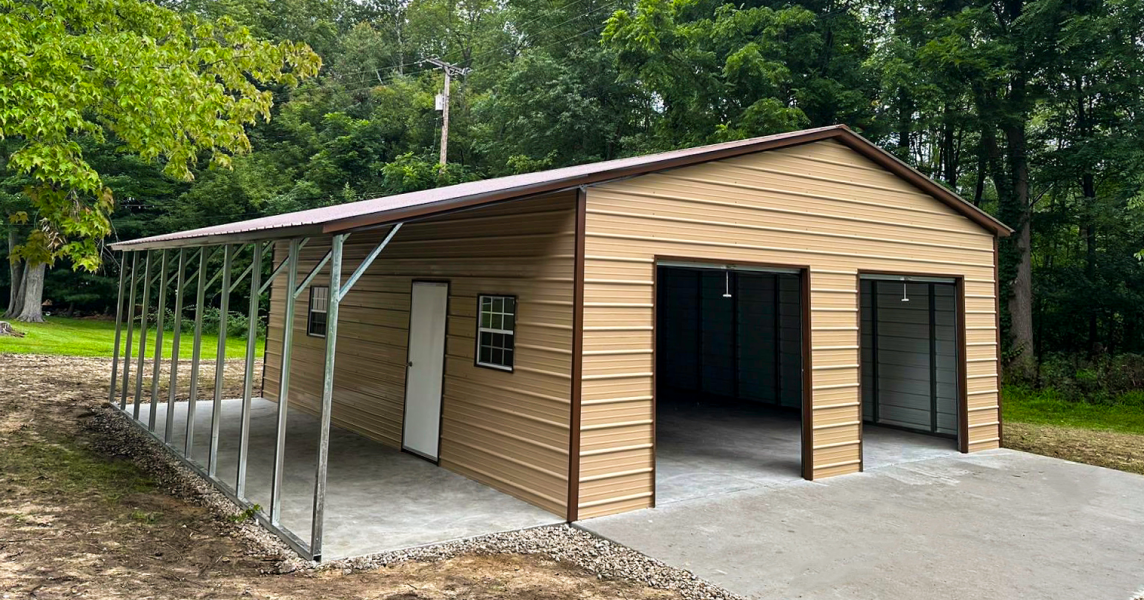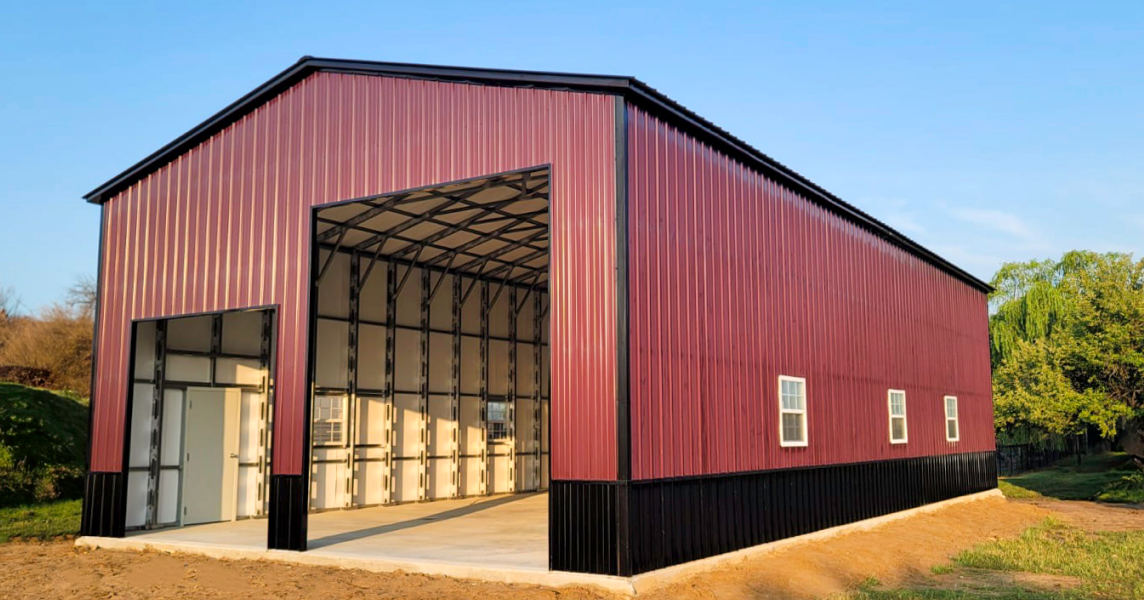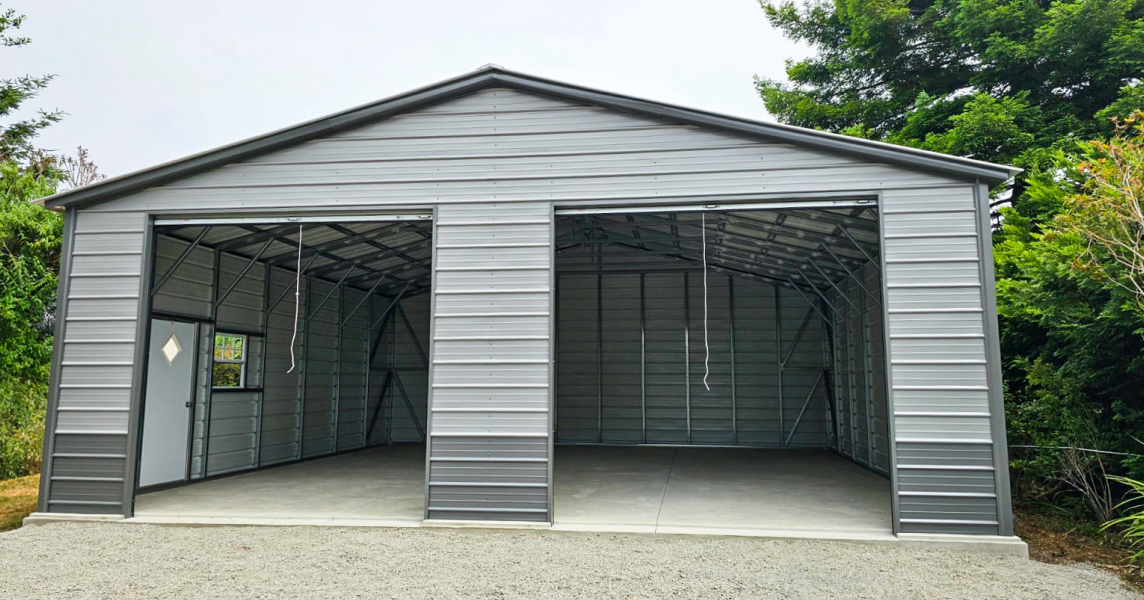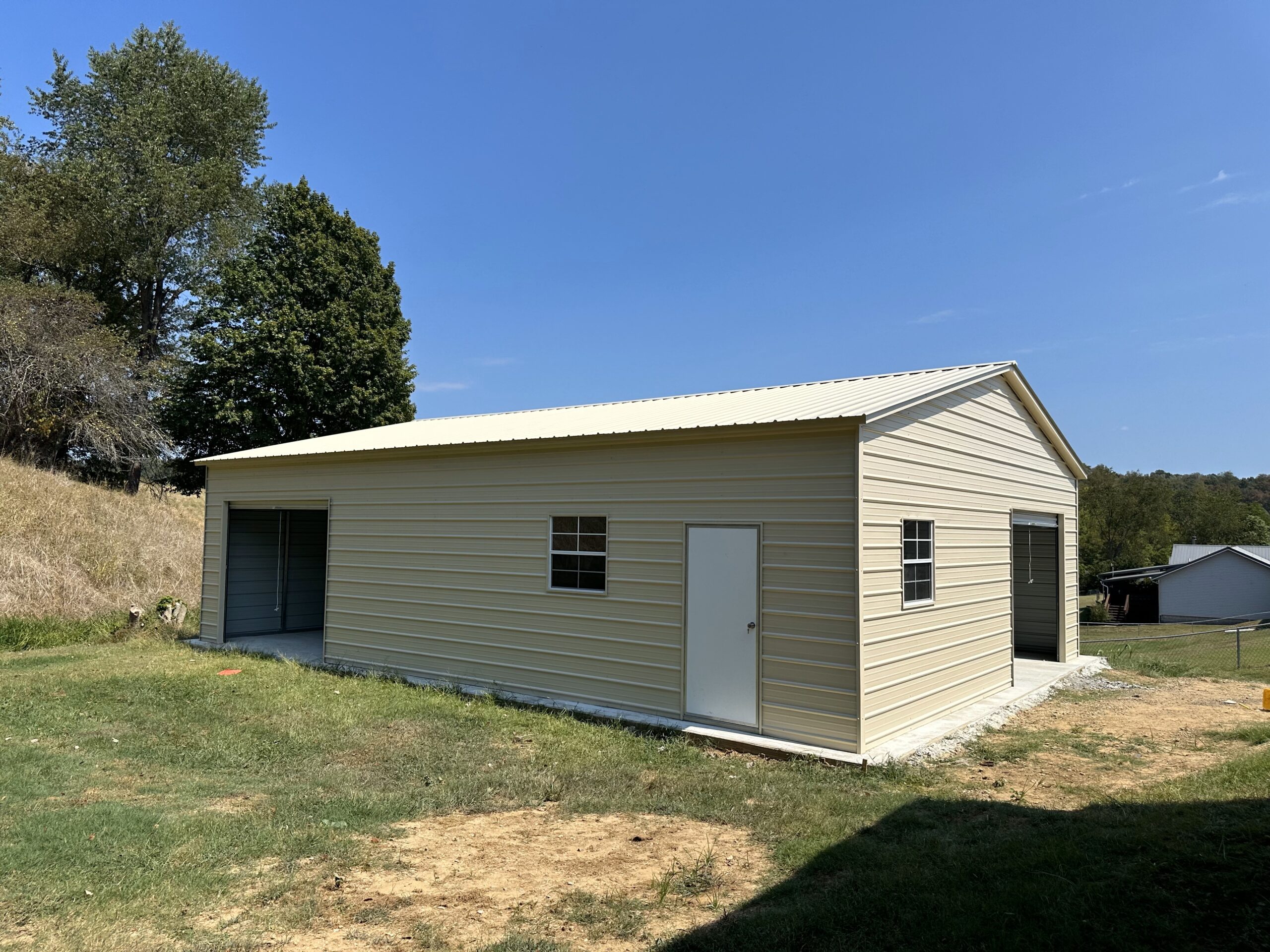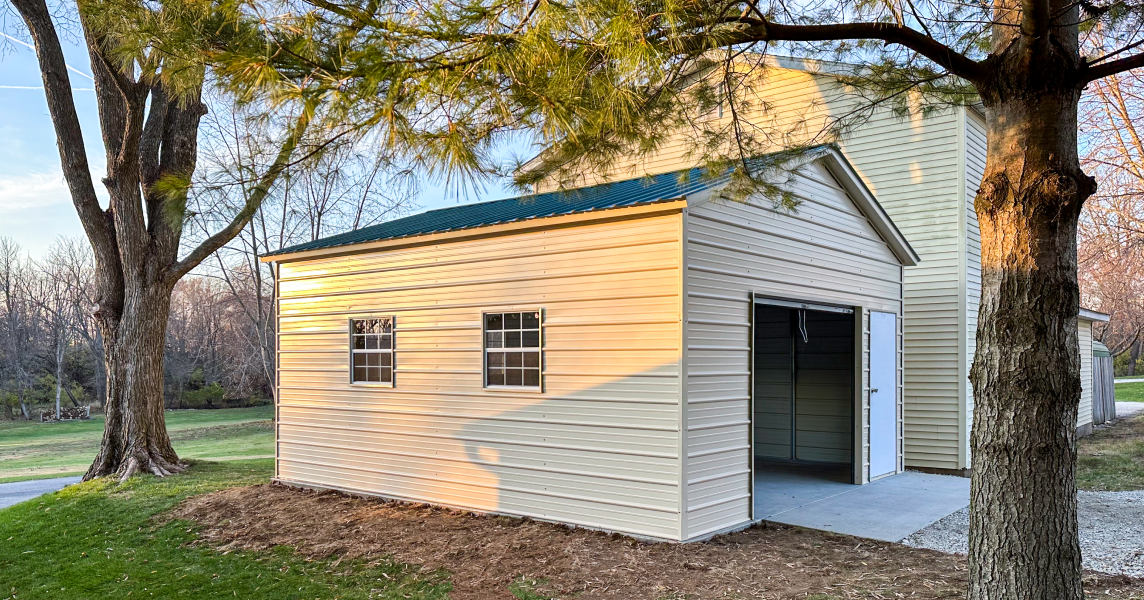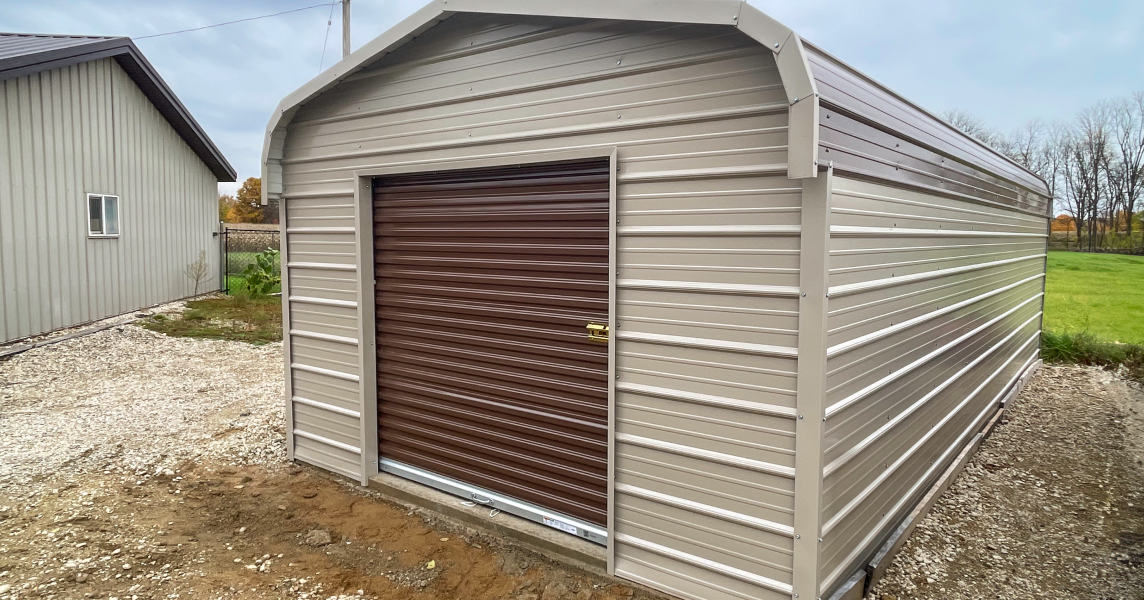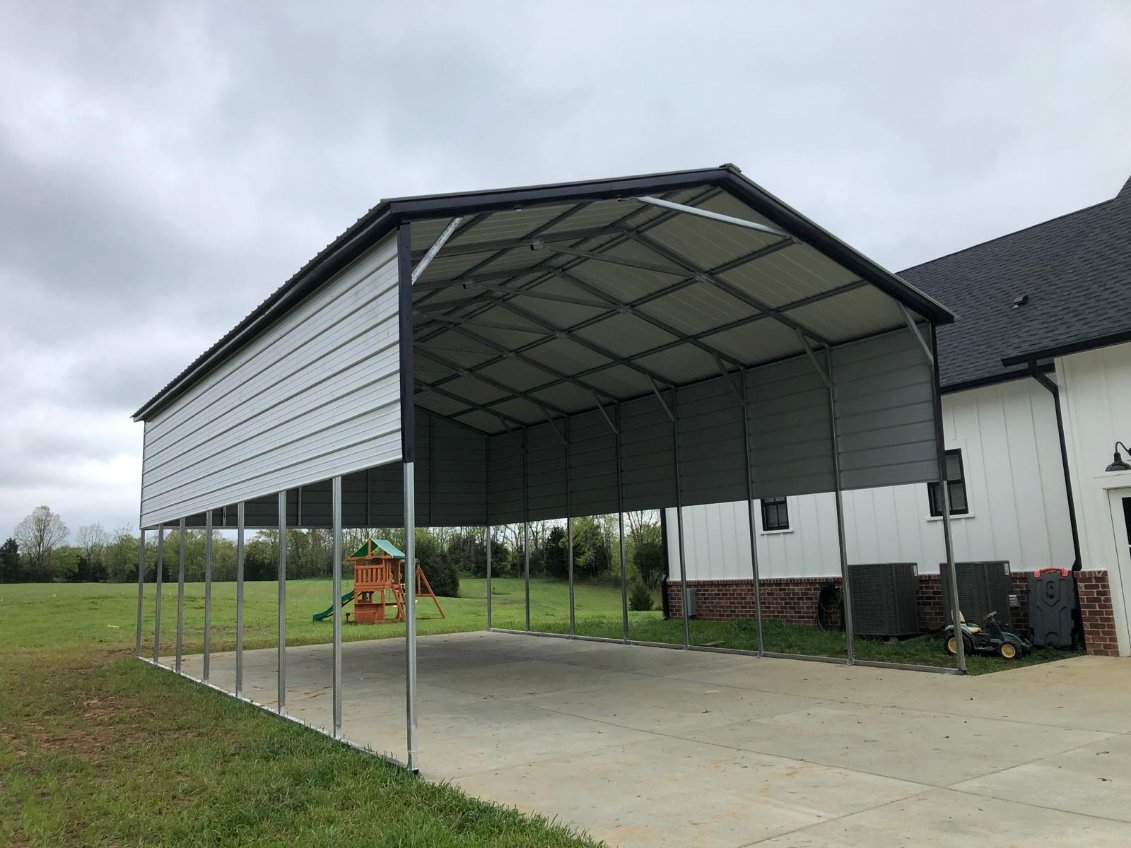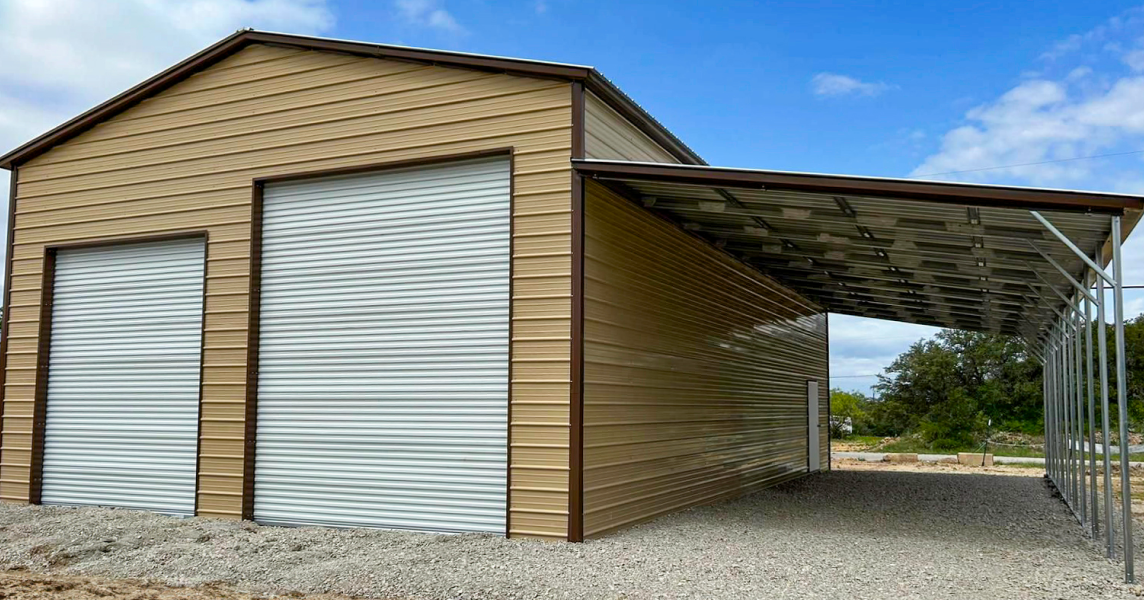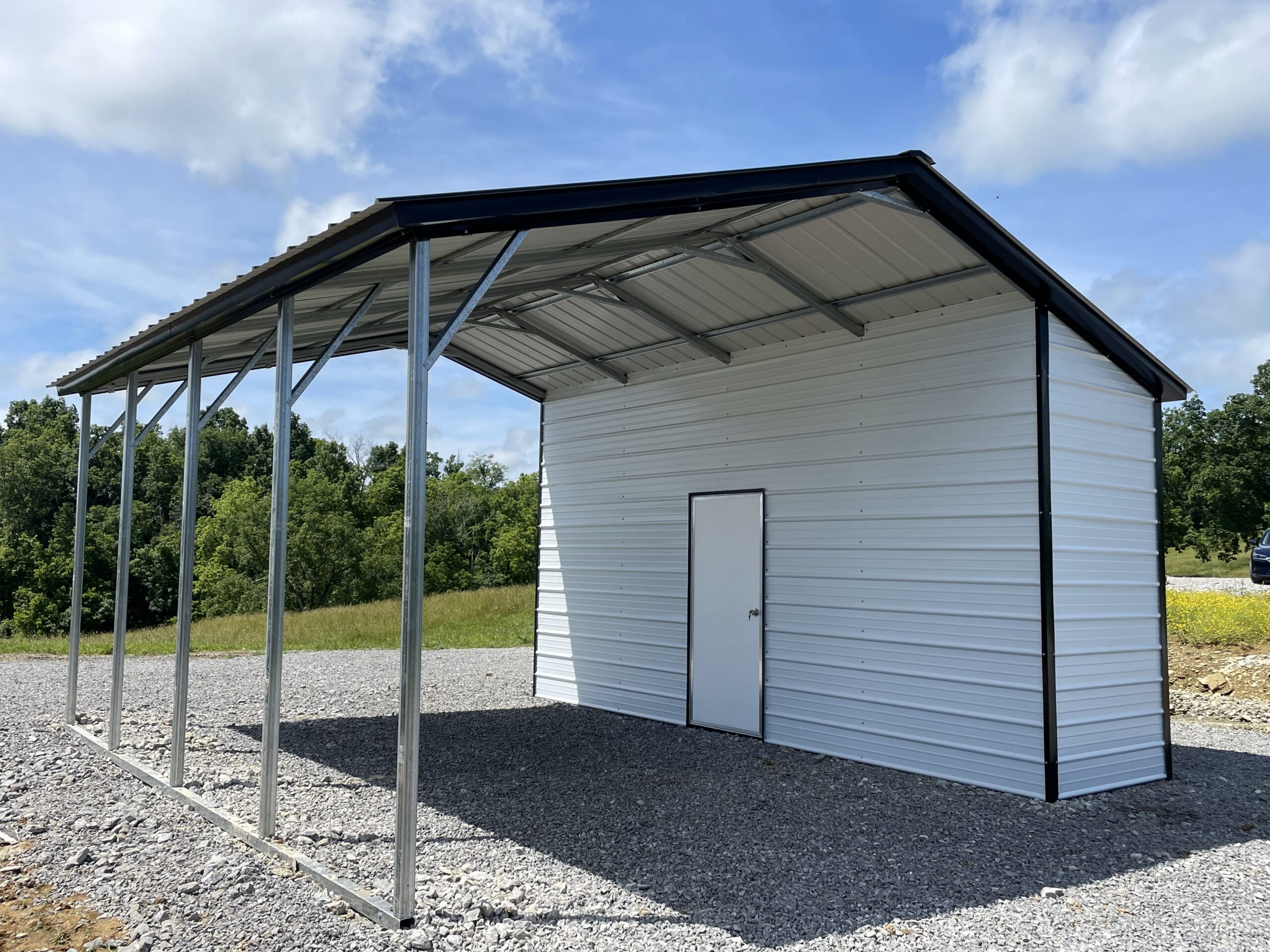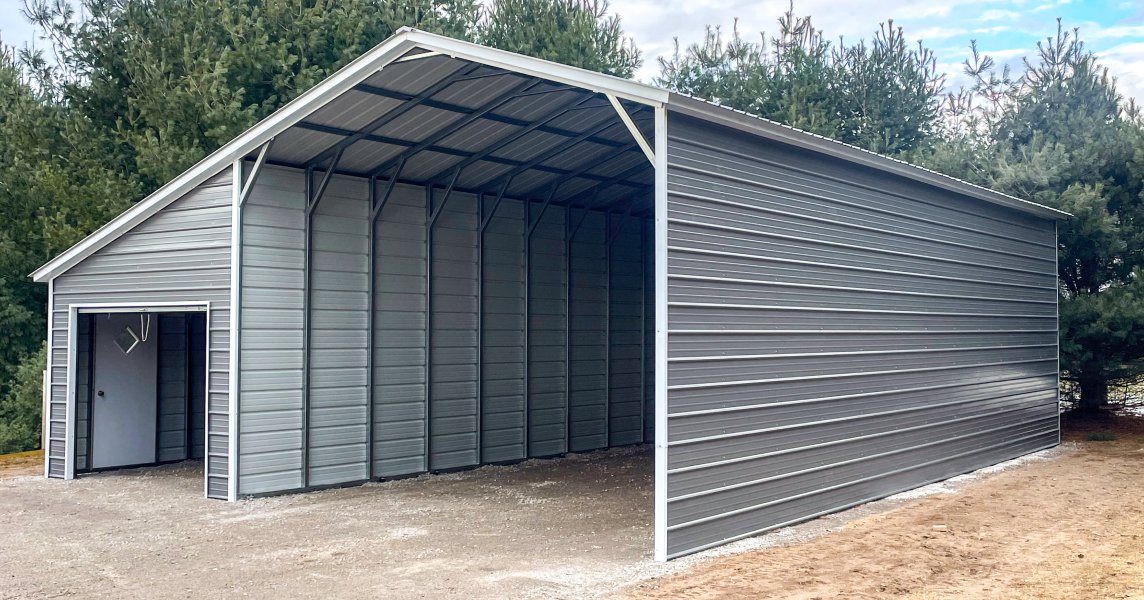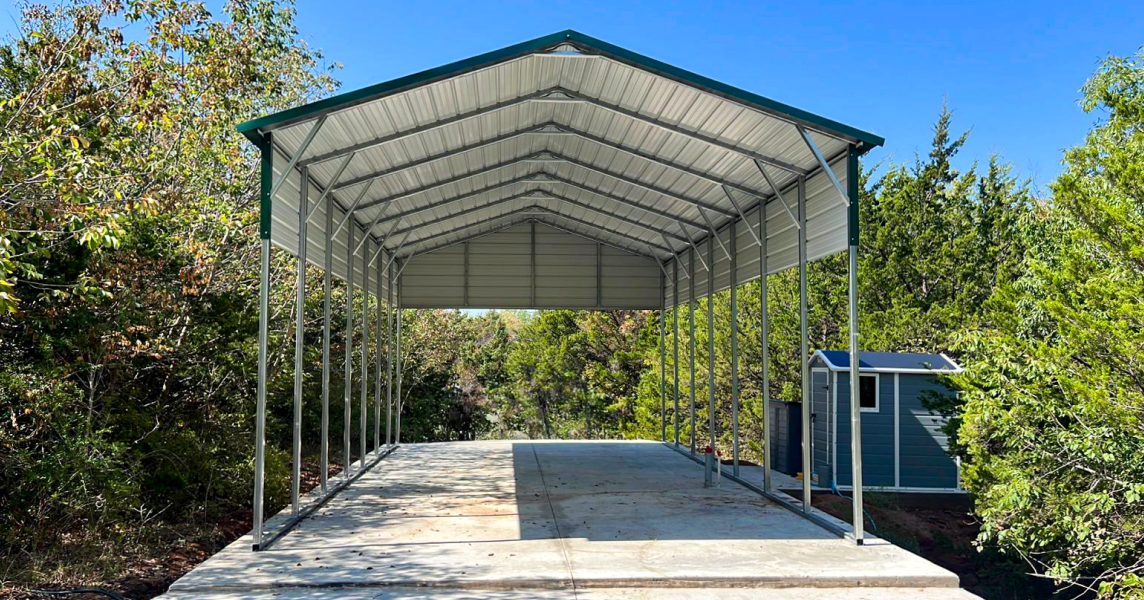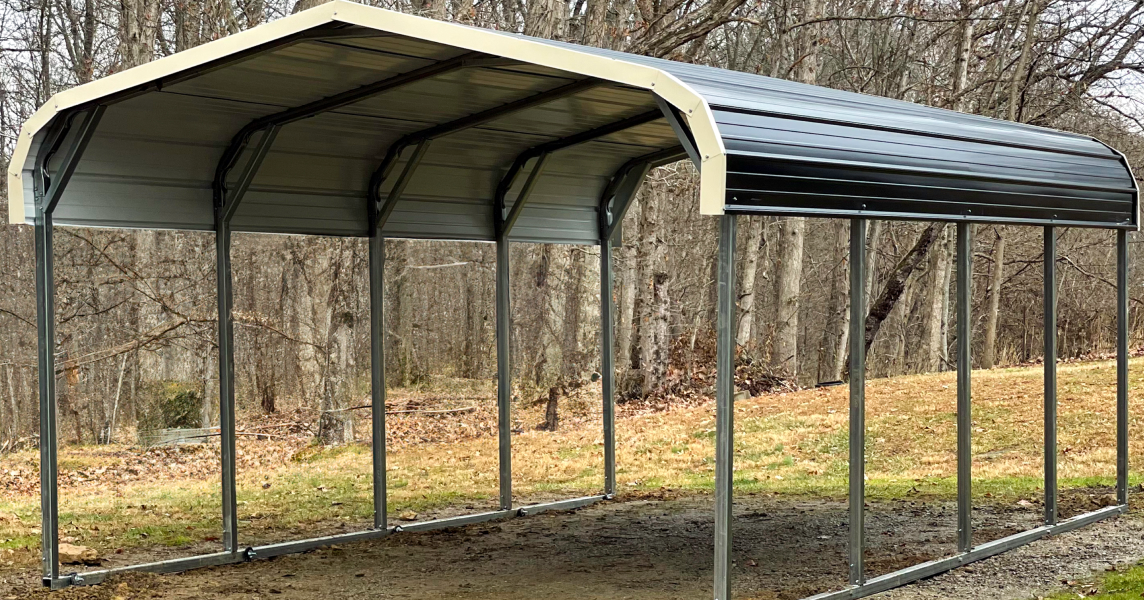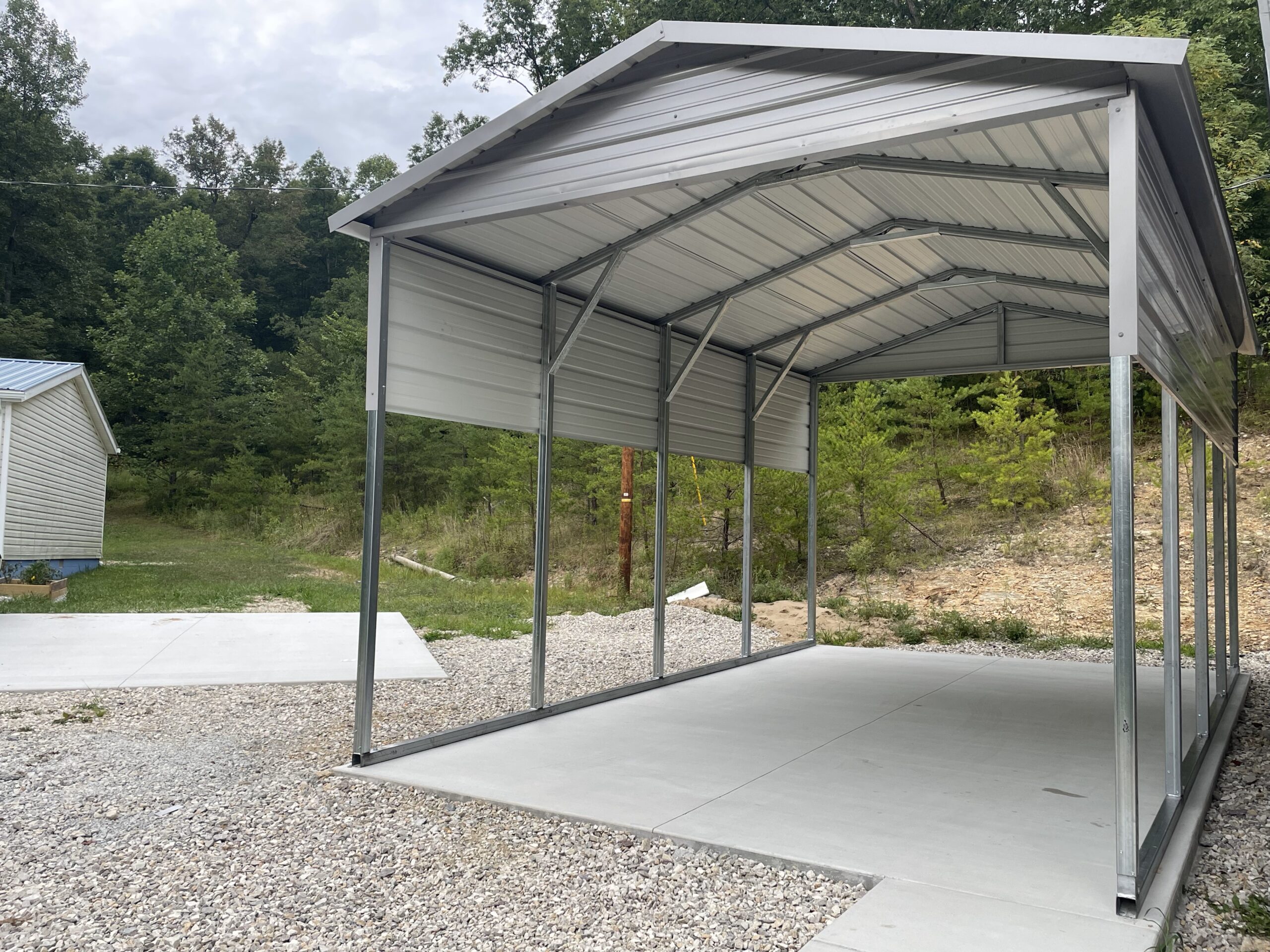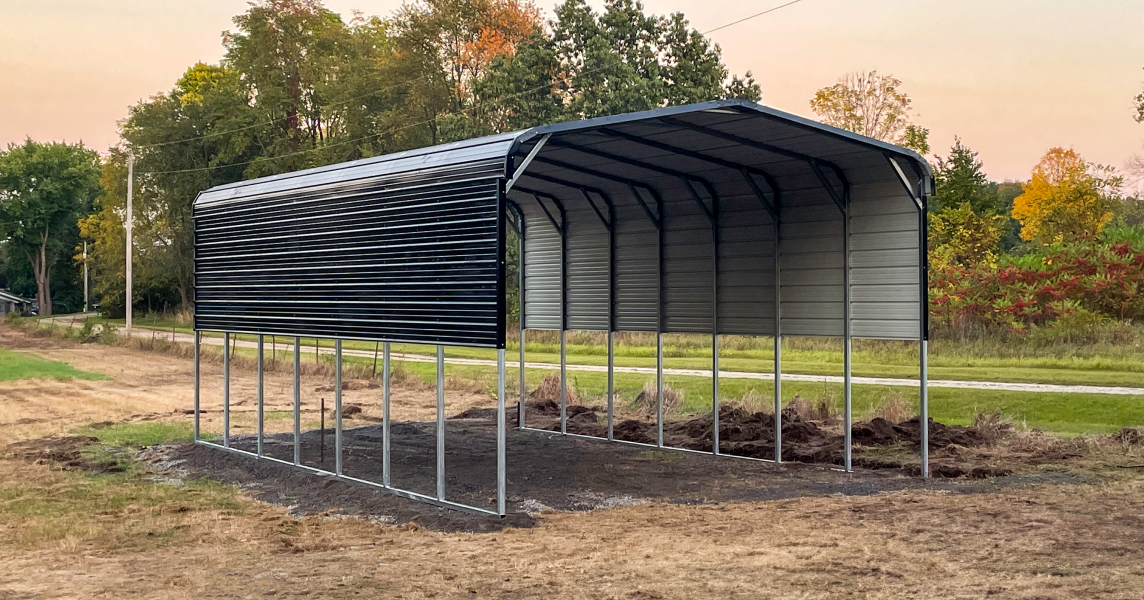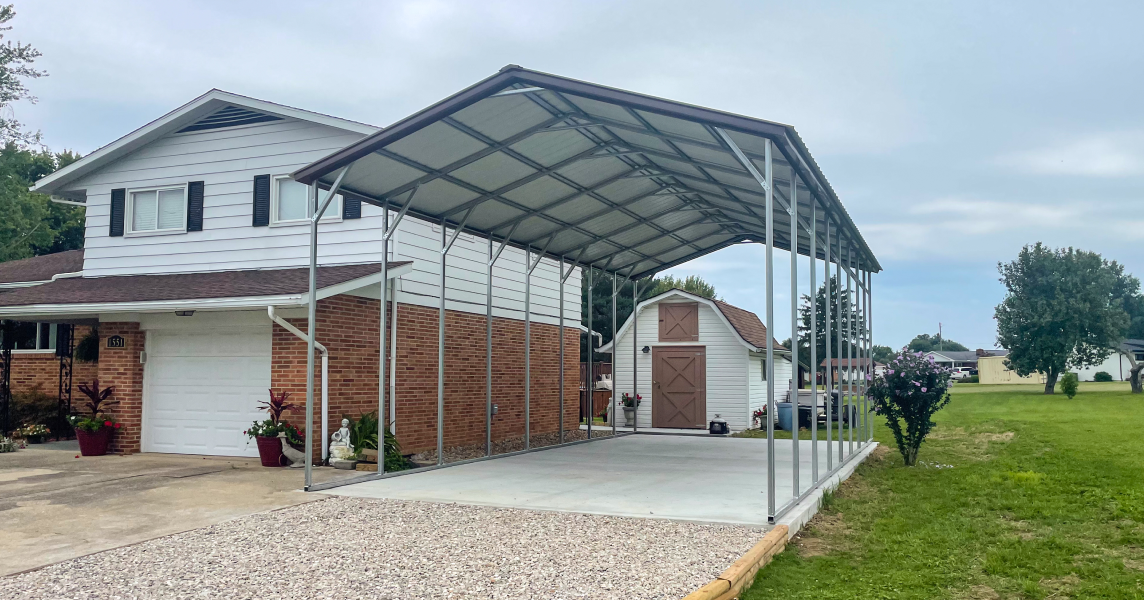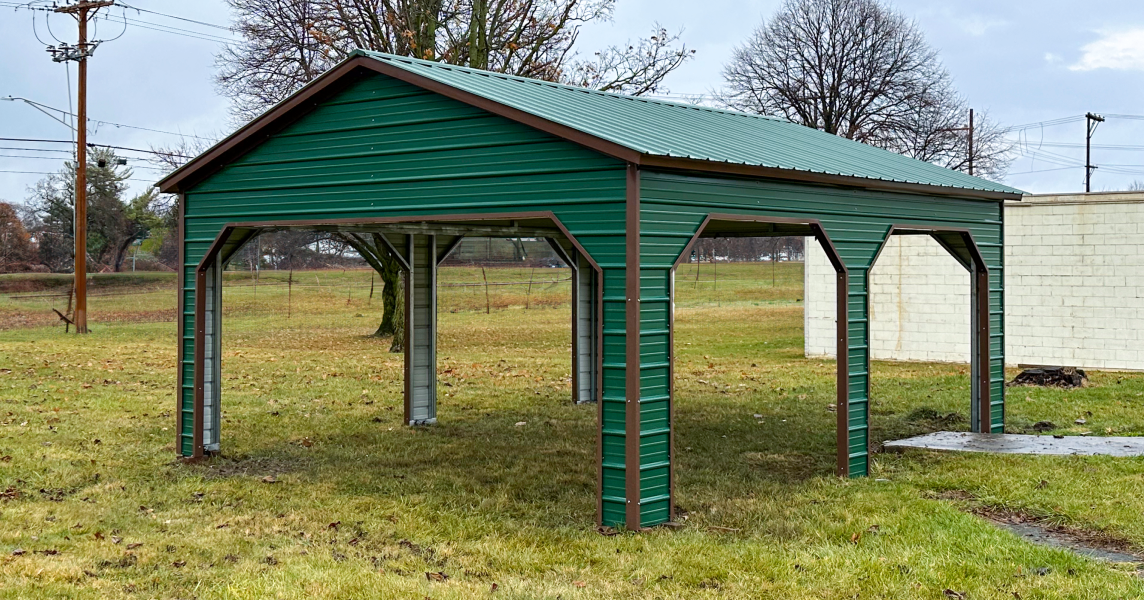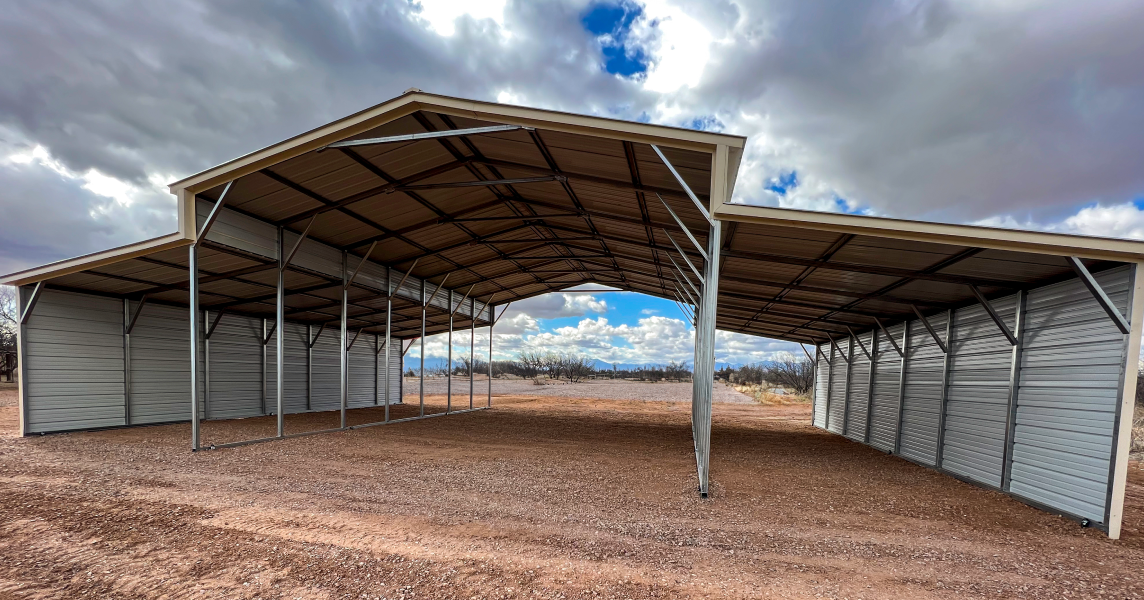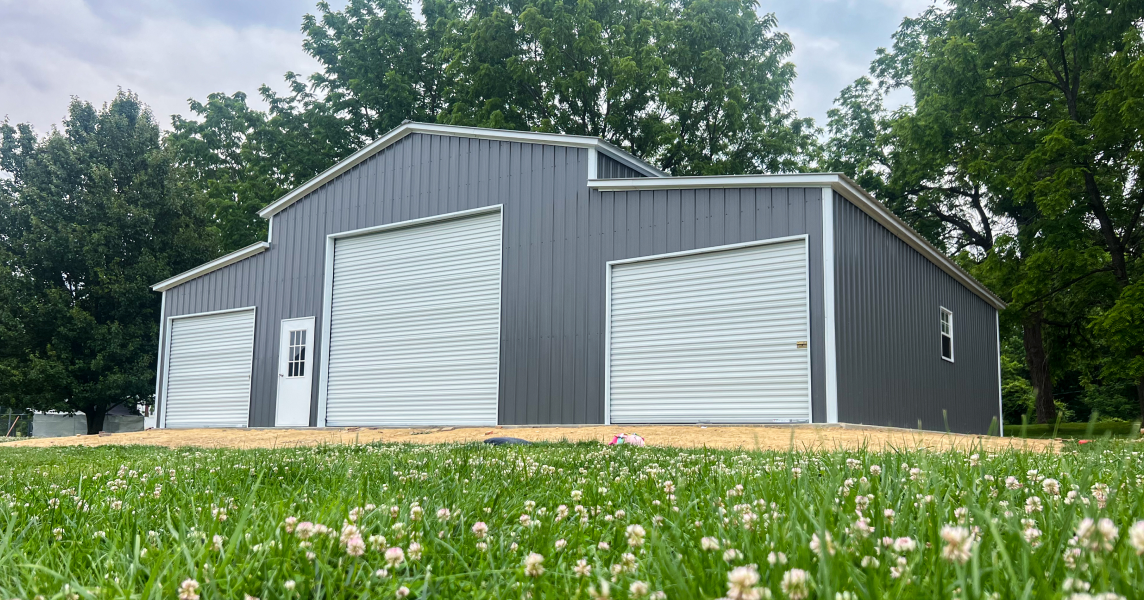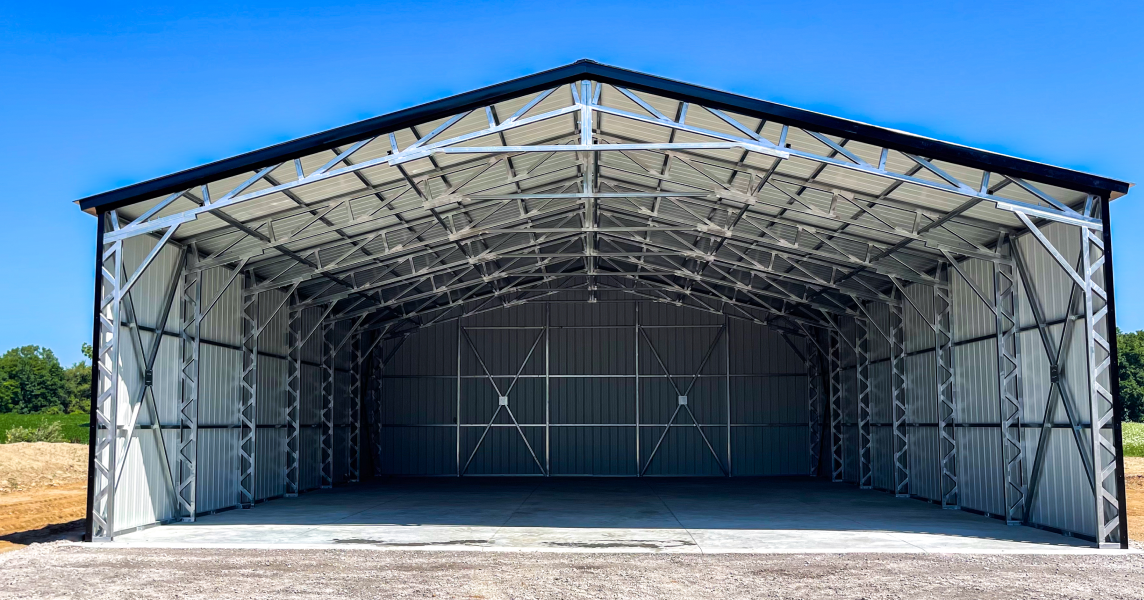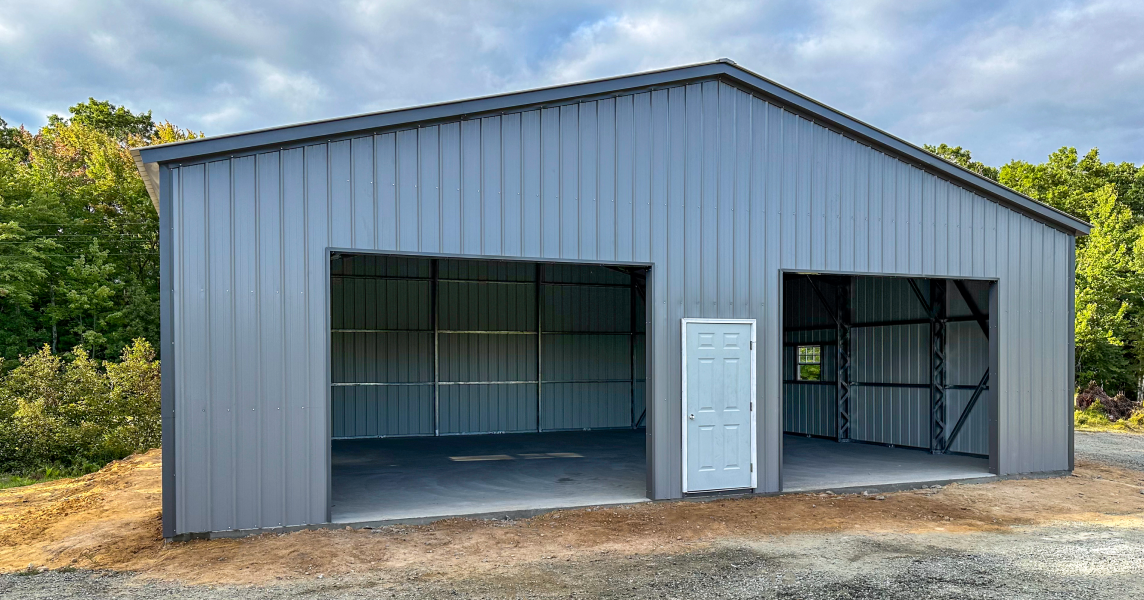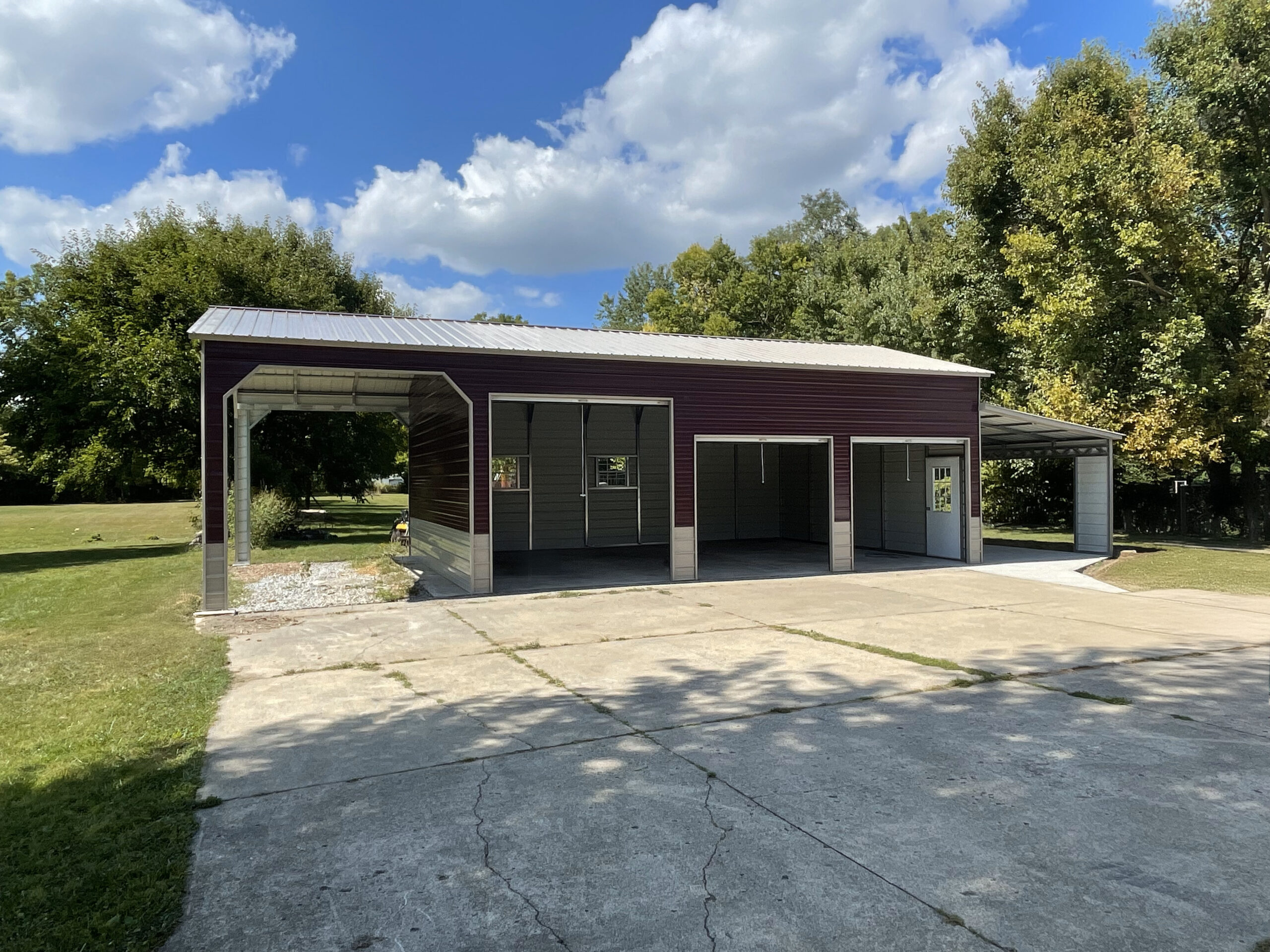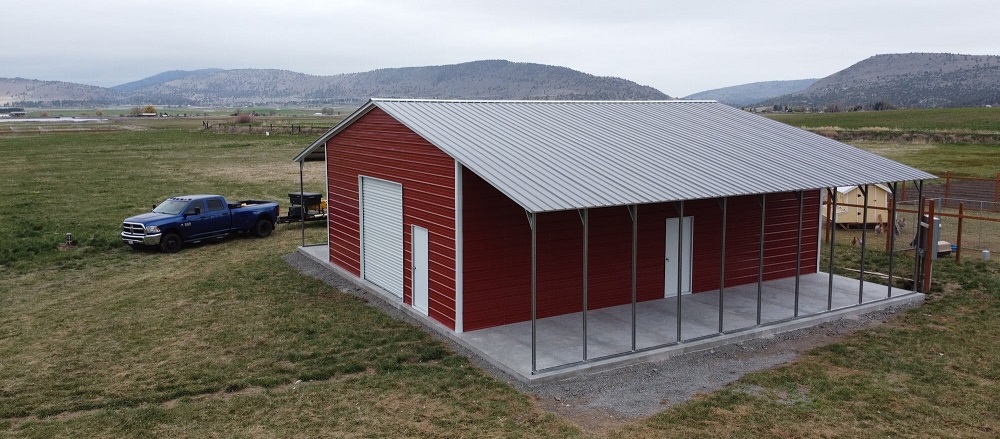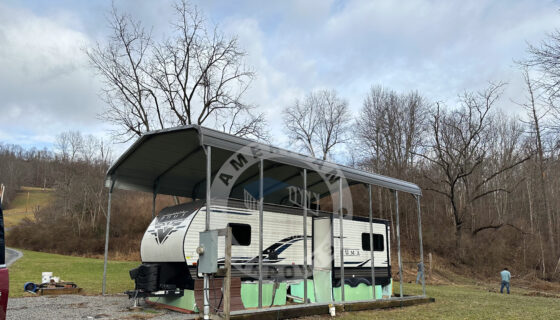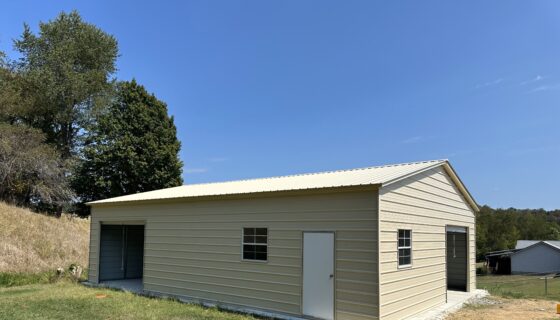The best roof pitch for your agricultural building depends on your climate, the material used for the roof, whether you want to have a loft space for storage, and other factors. In many cases, a pitch somewhere between 3:12 and 6:12 will work well, but all variables need to be considered before a final decision is made.
Let’s take a moment on this page to look closer at the matter of roof pitch and how it is determined. When you are ready to get started on a metal building project, or if you have any questions that require a direct answer from a member of our knowledgeable team, contact us at American Carports, Inc. right away.
What Does Roof Pitch Mean and Why Is It Important?
The term “roof pitch” describes how steep a roof is when it is placed on top of a building. When you see a roof pitch listed, it will be expressed in terms of rise over run, meaning how much the roof rises compared to its horizontal distance. So, if you see a roof pitch listed as 4:12, that means it rises 4 inches for every 12 inches of horizontal distance, or “run”.
Roof pitch is important because it impacts how effectively rain, snow, and debris will shed off the roof. A steeper roof is going to send rain and snow down to the ground more effectively, rather than allowing them to collect on top. This is helpful in climates where such conditions are common.
Which Roof Pitches Are Commonly Used for Agricultural Buildings?
There is no one ideal roof pitch that will apply to all buildings and all climates. Rather, it’s important to understand your local area and select a pitch that aligns with your needs in that area. Here are some of the options –
- 3:12. This is a relatively flat roof that is good for mild climates with minimal precipitation. This type of roof requires less material, so it will cost less to create.
- 4:12. Roofs in this range are pretty good at shedding water, so they are a nice option for moderate climates and a good blend of cost and performance.
- 6:12. This is a rather steep roof that will perform well when the snow begins to fall. While more expensive to build, a 6:12 roof can deal with difficult conditions for many years to come.
What Factors Influence the Ideal Pitch for Your Building?
As we have already said, the local climate in your area is going to be the primary factor when selecting a roof pitch for your building. You will also need to think about local building codes, as you need to confirm that whatever roof design you select is going to pass inspection.
Your budget is also going to come into the picture here. Steeper roofs are more expensive than flatter ones, so you’ll have to figure that factor into the equation. Do your best to make the right roof for your project fit into your budget so you don’t have to compromise in a way that will come back to cost you later.
Design a Custom Metal Building
Ready to create a new metal building? No matter what the roof pitch is going to be, the first step should be to connect with American Carports, Inc. to gain a trustworthy partner. You can experiment with our Build & Price tool now, or just contact us and get started working with our team. Either way, it will be our pleasure to serve you!
Frequently Asked Questions
What is the minimum roof pitch allowed by code for agricultural buildings?
The specific answer to this question is going to depend on local codes in your area. It’s often the case that a 3:12 pitch is the minimum allowed in snowy regions, but that’s just a guideline. The best course of action is to check the local codes that apply to your property so you can get a direct answer.
How does roof pitch affect snow load calculations?
As a roof gets steeper, the portion of the snow’s weight that is resting on the surface of the roof goes down, as some of the snow will slide off. So, a steeper roof is going to bear a lower structural load, which is why steeper roofs are common in snowy places.
Will a steeper roof pitch cost more than a flatter roof?
It’s often the case that a steeper roof will add to the cost of a building. The steeper roof design will require more materials to create the framing, and the labor may be higher as more work will be needed to complete the job. However, spending that money up front is better than having to go back and fix a roof that is too flat for your climate.

